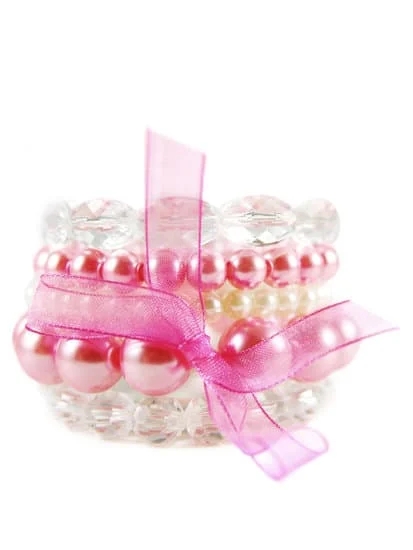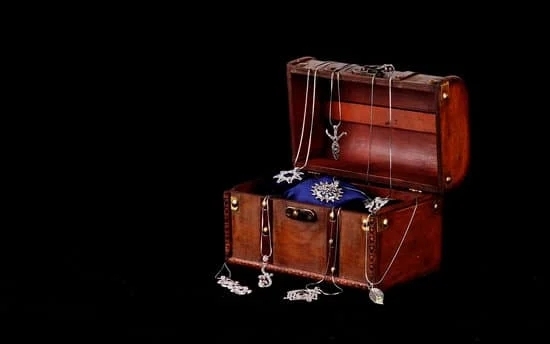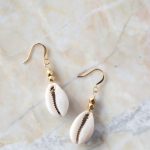The history of ancient Egyptian jewelry is as rich and fascinating as the civilization itself. Jewelry holds a significant cultural and historical value in ancient Egypt, reflecting the beliefs, traditions, and social status of the people. The intricate designs and craftsmanship of ancient Egyptian jewelry have continued to captivate the world with their timeless beauty and symbolism.
In ancient Egyptian society, jewelry served a multitude of purposes beyond adornment. It held religious, spiritual, and symbolic significance, often believed to protect the wearer from harm and bring good fortune. Materials such as gold, precious stones, faience, and glass were commonly used in the creation of jewelry, illustrating the wealth and opulence of the civilization.
The art of jewelry making in ancient Egypt was an essential part of everyday life, with both men and women adorning themselves with elaborate necklaces, earrings, bracelets, amulets, and rings. Each piece of jewelry had its own meaning and was worn for specific occasions or to denote one’s social standing. The role of jewelry in ancient Egyptian culture was deeply intertwined with daily rituals, ceremonies, and even burial practices.
Significance and Symbolism of Jewelry in Ancient Egypt
Ancient Egyptian jewelry held immense significance and symbolism within the culture. Jewelry was not only worn for aesthetic purposes, but it also had deep cultural and religious significance. From amulets to intricate necklaces, each piece of jewelry held a specific meaning and purpose in Ancient Egyptian society.
The symbolism of ancient Egyptian jewelry can be seen in the use of certain materials and designs. For example, the use of lapis lazuli was believed to have protective qualities and was associated with the goddess Hathor. The scarab beetle, a symbol of regeneration and rebirth, was commonly used in jewelry design. Additionally, certain symbols such as the ankh (symbolizing life) and the eye of Horus (symbolizing protection) were frequently incorporated into jewelry pieces.
Furthermore, jewelry in ancient Egypt was not just a fashion statement; it also served religious and societal functions. Amulets were commonly worn to protect the wearer from harm or to bring good luck. In addition, jewelry was often buried with the deceased to accompany them into the afterlife, emphasizing its importance beyond earthly life.
| Material | Symbolism |
|---|---|
| Lapis Lazuli | Protection and association with Hathor |
| Scarab Beetle | Regeneration and rebirth |
The significance and symbolism of ancient Egyptian jewelry continue to influence modern jewelry design, with many contemporary designers drawing inspiration from these timeless elements. Understanding the symbolism behind ancient Egyptian jewelry allows us to appreciate its cultural richness and enduring legacy within the world of adornment.
Materials and Techniques Used in Ancient Egyptian Jewelry Making
Ancient Egyptian jewelry was crafted using a variety of materials and techniques that were not only advanced for their time but also contributed to the stunning beauty and durability of these pieces. The ancient Egyptians had access to an abundance of natural resources, which they skillfully incorporated into their jewelry making.
Some of the most common materials used in ancient Egyptian jewelry making included:
- Gold: This precious metal was highly prized and often reserved for royalty or the elite class. It was used to craft intricate pieces such as diadems, rings, and amulets.
- Gemstones: The ancient Egyptians adorned their jewelry with vibrant gemstones such as lapis lazuli, carnelian, turquoise, and jasper. These stones were believed to have protective and symbolic properties.
- Faience: A type of glazed ceramic material that was used to create colorful beads and amulets.
- Silver: While not as prevalent as gold, silver was also used in the creation of jewelry, particularly for items like bracelets and anklets.
In addition to the use of these exquisite materials, the ancient Egyptians employed various techniques to bring their jewelry designs to life. Some of these techniques included:
- Granulation: This intricate method involved fusing tiny granules of precious metal onto a metal surface to create patterns or textures.
- Filigree: Delicate wires of gold or silver were twisted or soldered together to form decorative motifs, resulting in exquisite and ornate designs.
- Casting: The process of pouring molten metal into molds to create detailed three-dimensional forms such as amulets and pendants.
The combination of these materials and techniques resulted in jewelry that not only served as adornment but also held deep cultural and spiritual significance for the ancient Egyptians. The craftsmanship evident in these pieces continues to captivate and inspire modern jewelry designers around the world.
Types of Jewelry Worn in Ancient Egypt (Eg Necklaces, Earrings, Bracelets)
In ancient Egypt, jewelry was not only worn as a fashion statement, but it also held significant cultural and religious importance. The types of jewelry worn by the ancient Egyptians were varied and diverse, each serving a different purpose or symbolizing different aspects of life. Here are some of the most common types of jewelry worn in ancient Egypt:
1. Necklaces: Ancient Egyptian necklaces were often made with intricate beadwork or precious stones such as lapis lazuli, turquoise, and carnelian. They were worn by both men and women and could signify wealth, status, or protection.
2. Earrings: Earrings were another popular form of jewelry in ancient Egypt. They were typically worn by both men and women and came in a variety of shapes and designs, often featuring symbols such as the Ankh or the Eye of Horus.
3. Bracelets: Bracelets were commonly worn by both genders in ancient Egypt and could be made from materials like gold, silver, or faience. They were often inscribed with protective spells or symbols to ward off evil spirits.
The history of ancient Egyptian jewelry tells us that these accessories were not just for adornment; they had deep cultural significance and played a crucial role in daily life and religious rituals. From amulets to elaborate headdresses, each piece held meaning beyond its aesthetic appeal.
Role of Jewelry in Ancient Egyptian Society and Culture
Jewelry played a significant role in ancient Egyptian society and culture, serving both decorative and symbolic purposes. The wearing of jewelry was not limited to the wealthy elite, as people from all social classes adorned themselves with various pieces. Jewelry was considered an essential element of daily attire, with both men and women adorning themselves with intricate pieces for different occasions.
In ancient Egyptian society, jewelry served not only aesthetic purposes but also held cultural and religious significance. Certain jewelry items were believed to offer protection or bring good fortune to the wearer, such as amulets and amulet necklaces. Additionally, certain symbols and motifs featured in the jewelry had specific meanings, often related to Egyptian mythology and beliefs. For example, the scarab beetle symbolized rebirth and regeneration, while the ankh represented life.
The significance of jewelry extended beyond individual adornment; it also played a vital role in religious rituals and burial practices. Jewelry was often included in burial chambers as funerary goods, intended to accompany the deceased into the afterlife. This reflects the belief that jewelry held spiritual importance and was necessary for ensuring a successful journey into the next life according to their religious beliefs.
Overall, ancient Egyptian jewelry served as a reflection of societal norms, cultural beliefs, and individual identities. It was an integral part of everyday life as well as significant ceremonial occasions, demonstrating its enduring impact on ancient Egyptian society and culture.
Famous Examples of Ancient Egyptian Jewelry
Ancient Egypt is famous for its stunning and intricate jewelry which was an essential part of everyday life and culture. One of the most famous examples of ancient Egyptian jewelry is the gold funerary mask found in the tomb of King Tutankhamun.
This iconic piece is adorned with lapis lazuli, turquoise, carnelian, and other precious stones, showcasing the wealth and craftsmanship of ancient Egyptians. Another notable example is the gold and gemstone collar found in the tomb of Queen Ahhotep I, which reflects the importance of jewelry as a symbol of status and power.
The use of amulets in ancient Egyptian jewelry is another significant aspect. Amulets were believed to have magical properties that offered protection and good fortune. The heart scarab amulet is a well-known example, typically placed on mummies to ensure safe passage to the afterlife. Additionally, the use of hieroglyphs in jewelry design was also common, with earrings and necklaces inscribed with protective spells or personal messages.
The history of ancient Egyptian jewelry continues to captivate people around the world due to its timeless beauty and cultural significance. These exquisite pieces offer valuable insights into the beliefs, values, and artistic skills of this ancient civilization, making them an enduring source of inspiration for modern jewelry designers.
| Famous Example | Description |
|---|---|
| King Tutankhamun’s Funerary Mask | Adorned with lapis lazuli, turquoise, carnelian, showcasing wealth and craftsmanship |
| Queen Ahhotep I’s Collar | Gold and gemstone collar reflecting status and power |
| Heart Scarab Amulet | Offering protection during passage to the afterlife |
Influence of Ancient Egyptian Jewelry on Modern Jewelry Design
Ancient Egyptian jewelry has had a significant impact on modern jewelry design, with its influence being seen in various aspects of contemporary jewelry making. The timeless and elegant designs of ancient Egyptian jewelry continue to inspire and influence the work of modern jewelers around the world.
Symbols and Motifs
One of the most notable ways in which ancient Egyptian jewelry has influenced modern design is through the use of symbols and motifs. The use of hieroglyphics, animal figures, and religious symbols in ancient Egyptian jewelry has inspired contemporary designers to incorporate similar elements into their pieces. These symbols add depth and meaning to modern jewelry, connecting it to the rich history and culture of ancient Egypt.
Materials and Techniques
The materials and techniques used in ancient Egyptian jewelry making have also impacted modern design. The use of gold, silver, precious gemstones, and intricate metalwork found in ancient Egyptian jewelry continues to be revered by modern jewelers. Many designers draw inspiration from these traditional materials and techniques, incorporating them into their own contemporary creations.
Aesthetic Appeal
The overall aesthetic appeal of ancient Egyptian jewelry has left a lasting impression on modern design. The bold geometric shapes, vibrant colors, and striking symmetry found in ancient Egyptian pieces are often echoed in today’s jewelry. This enduring aesthetic legacy speaks to the timelessness and universal appeal of ancient Egyptian jewelry.
The influence of ancient Egyptian jewelry on modern design is undeniable, as it continues to shape the way contemporary jewelers create their pieces. By drawing from the symbolism, materials, techniques, and aesthetic appeal of ancient Egyptian jewelry, designers are able to pay homage to this rich historical tradition while creating stunning works of art for today’s world.
Preservation and Discoveries of Ancient Egyptian Jewelry
Preservation
The preservation of ancient Egyptian jewelry has been a significant challenge due to the delicate nature of the materials used and the passage of time. However, through meticulous conservation efforts, many exquisite pieces have been successfully preserved for future generations to admire. Preservation techniques include careful cleaning, storage in controlled environments, and sometimes even restoration to prevent further deterioration.
One noteworthy example of successful preservation is the collection housed at the Egyptian Museum in Cairo. The museum boasts an extensive array of ancient Egyptian jewelry, including intricate gold and gemstone pieces that have been remarkably well-preserved. These artifacts provide a rare glimpse into the craftsmanship and artistry of ancient Egyptian jewelry making.
Discoveries
Numerous discoveries of ancient Egyptian jewelry have been made over the years, both within Egypt and in other parts of the world. Archaeological excavations have unearthed a wealth of jewelry items, from elaborate burial ornaments to everyday adornments. These discoveries not only shed light on the history and culture of ancient Egypt but also contribute to our understanding of jewelry-making techniques and artistic styles from that era.
One particularly notable discovery took place in 1922 when British archaeologist Howard Carter uncovered the tomb of King Tutankhamun in the Valley of the Kings. Among the treasures found within the tomb were exquisite pieces of jewelry, including a gold death mask adorned with precious gemstones. The discovery captured global attention and reignited interest in ancient Egyptian jewelry, leading to further exploration and study in subsequent decades.
The ongoing discoveries and preservation efforts surrounding ancient Egyptian jewelry continue to fuel fascination with this rich aspect of history. As new technologies and methods for conservation emerge, there is hope that even more remarkable pieces will be safeguarded for future generations to appreciate.
Conclusion
In conclusion, the history of ancient Egyptian jewelry is a testament to the creativity, craftsmanship, and cultural significance of jewelry in this ancient civilization. The jewelry not only served as adornment but also held deep symbolism and religious significance for the ancient Egyptians. From materials like gold, precious stones, and faience to techniques such as granulation and cloisonné, the craftsmanship of ancient Egyptian jewelry was unparalleled.
The legacy of ancient Egyptian jewelry can be seen in the continued influence on modern jewelry design. The use of symbolic motifs, intricate designs, and bold use of color continues to inspire contemporary jewelry makers. The significance of jewelry in society and culture has also been passed down through the ages, with jewelry remaining an important part of personal expression and cultural identity.
The preservation and discoveries of ancient Egyptian jewelry have provided invaluable insights into the beliefs, customs, and artistic achievements of this ancient civilization. Through archaeological finds and museum collections around the world, we continue to learn about the role that jewelry played in ancient Egyptian society. The impact of ancient Egyptian jewelry goes beyond its aesthetic appeal; it serves as a link between the past and present, reminding us of the enduring power of human creativity and craftsmanship throughout history.
Frequently Asked Questions
What Did Ancient Egyptian Jewelry Symbolize?
Ancient Egyptian jewelry symbolized various things, including social status, wealth, religious beliefs, and protection. It was also seen as a form of adornment and beauty, with different types of jewelry indicating different meanings.
When Did Egyptians Start Wearing Jewelry?
Egyptians started wearing jewelry as early as 4000 BC during the Predynastic period. Jewelry was made from materials like beads, shells, and semi-precious stones. Over time, the craftsmanship and materials used became more sophisticated.
Why Were Ancient Egyptians Buried With Jewelry?
Ancient Egyptians were buried with jewelry because they believed in an afterlife where the soul would need material possessions. Additionally, the amulets and symbols on the jewelry were thought to provide magical protection in the afterlife journey.

Welcome to my jewelry blog! My name is Sarah and I am the owner of this blog.
I love making jewelry and sharing my creations with others.
So whether you’re someone who loves wearing jewelry yourself or simply enjoys learning about it, be sure to check out my blog for insightful posts on everything related to this exciting topic!





